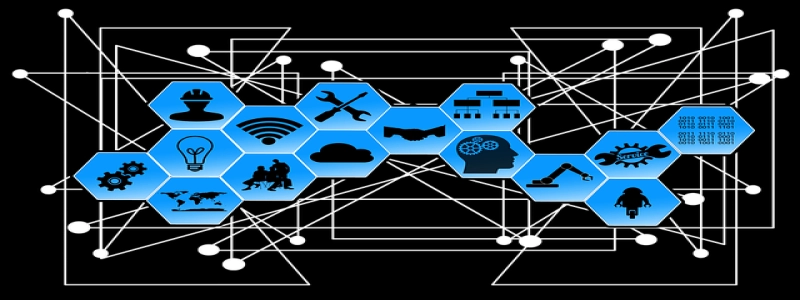【Data Rate View】
I. Introduction
A. Definition
B. Importance of data rates
II. Factors Affecting Data Rates
A. Bandwidth
B. Signal-to-Noise Ratio
C. Error Rate
III. Effective Data Rate vs. Theoretical Data Rate
A. Definition of effective data rate
B. Factors affecting effective data rate
C. Comparison with theoretical data rate
IV. Applications of High Data Rates
A. Video streaming
B. Online gaming
C. Cloud computing
V. Challenges in Achieving High Data Rates
A. Infrastructure limitations
B. Interference
C. Spectrum allocation
VI. Strategies for Improving Data Rates
A. Use of advanced modulation techniques
B. Increasing bandwidth availability
C. Implementing error correction codes
D. Enhanced antenna technologies
VII. Future Trends in Data Rates
A. 5G technology
B. Internet of Things (IoT)
C. Artificial Intelligence (AI)
VIII. Conclusion
A. Recap of key points
B. Importance of continuous advancements in data rates
【Data Rate View】
I. Introduction
A. Definition
In the field of telecommunications and computer networking, data rate refers to the speed at which data is transmitted or received over a network. It is typically measured in bits per second (bps) or multiples thereof, such as kilobits per second (Kbps), megabits per second (Mbps), or gigabits per second (Gbps).
B. Importance of data rates
Data rates play a crucial role in determining the efficiency and performance of various network applications. Higher data rates enable faster transmission of data, thereby reducing latency and enhancing the user experience. They are especially critical in applications such as video streaming, online gaming, and cloud computing, where large amounts of data need to be transmitted in real-time.
II. Factors Affecting Data Rates
A. Bandwidth
The available bandwidth is one of the primary factors influencing data rates. It determines the amount of data that can be transmitted within a given time frame. A wider bandwidth allows for higher data rates, as more data can be transmitted simultaneously.
B. Signal-to-Noise Ratio
The signal-to-noise ratio (SNR) refers to the ratio of the desired signal to the unwanted background noise present in the transmission medium. A higher SNR results in better signal quality, enabling higher data rates. Conversely, a lower SNR leads to increased errors and reduced data rates.
C. Error Rate
The error rate measures the percentage of bits that are incorrectly received or transmitted. Higher error rates decrease data rates, as additional time is required for error detection and retransmission.
III. Effective Data Rate vs. Theoretical Data Rate
A. Definition of effective data rate
Effective data rate is the actual speed at which data is successfully transmitted or received, taking into account various factors such as overhead, error correction, and protocol limitations. It is typically lower than the theoretical data rate.
B. Factors affecting effective data rate
The effective data rate can be impacted by factors such as protocol overhead, packet loss, retransmissions, and network congestion. These factors reduce the efficiency of data transmission and lower the overall data rate.
C. Comparison with theoretical data rate
The theoretical data rate represents the maximum potential speed at which data can be transmitted in ideal conditions without any interference or limitations. While it provides an upper limit, the effective data rate is a more realistic representation of the achievable speeds in real-world scenarios.
IV. Applications of High Data Rates
A. Video streaming
High data rates are essential for smooth video streaming, especially for high-definition (HD) and 4K content. They ensure minimal buffering and uninterrupted playback, allowing users to enjoy a seamless viewing experience without delays or interruptions.
B. Online gaming
Online gaming relies heavily on high data rates to enable real-time communication and interaction between players. Low data rates can result in lag, latency, and disrupted gameplay, negatively impacting the gaming experience.
C. Cloud computing
Cloud computing involves the storage and processing of data on remote servers accessed via the internet. High data rates are necessary for efficient data transfer to and from the cloud, enabling faster access to applications and services hosted in the cloud, such as online collaboration tools and data analytics platforms.
V. Challenges in Achieving High Data Rates
A. Infrastructure limitations
The infrastructure required to support high data rates, such as fiber-optic cables and advanced network equipment, can be costly and challenging to deploy. Upgrading existing infrastructure to accommodate higher data rates poses significant logistical and financial obstacles.
B. Interference
Interference from other electronic devices or neighboring networks can disrupt signal transmission and degrade data rates. Mitigating interference through proper frequency planning, shielding, and signal processing techniques is crucial to ensure stable and high-speed data transmission.
C. Spectrum allocation
The availability of suitable frequency bands for data transmission is critical in achieving high data rates. Efficient spectrum allocation and management by regulatory bodies are necessary to ensure optimal use of the limited frequency spectrum, allowing for increased data rates without interference.
VI. Strategies for Improving Data Rates
A. Use of advanced modulation techniques
Advanced modulation techniques, such as quadrature amplitude modulation (QAM) and orthogonal frequency-division multiplexing (OFDM), enable the transmission of multiple bits per symbol, significantly increasing data rates. These techniques maximize spectral efficiency and enhance the capacity of communication systems.
B. Increasing bandwidth availability
Expanding available bandwidth through technologies like fiber-optic cables and higher frequency bands, such as millimeter-wave spectrum, allows for higher data rates. Increasing bandwidth availability is a vital strategy to support the growing demands for faster and more reliable data transmission.
C. Implementing error correction codes
Error correction codes, such as Reed-Solomon codes and forward error correction (FEC), can detect and correct errors in data transmission. By introducing redundancy into the transmitted data, these codes increase the resilience of the communication system, reducing the impact of errors on data rates.
D. Enhanced antenna technologies
Advanced antenna technologies, such as multiple-input multiple-output (MIMO) systems and beamforming, improve signal reception and transmission efficiency. These technologies enhance data rates by maximizing the utilization of available signals, reducing interference, and increasing coverage areas.
VII. Future Trends in Data Rates
A. 5G technology
The deployment of 5G networks promises significantly higher data rates compared to previous generations of cellular networks. With its use of advanced technologies like massive MIMO and millimeter-wave frequencies, 5G aims to deliver multi-gigabit data rates, enabling faster and more innovative applications.
B. Internet of Things (IoT)
The proliferation of IoT devices requires higher data rates to accommodate the large-scale data exchange between devices and cloud platforms. Increasing data rates will be essential to support the seamless interconnectivity and real-time data processing capabilities of IoT applications.
C. Artificial Intelligence (AI)
AI applications, such as autonomous vehicles and real-time video analytics, rely on high data rates for quick decision-making and data analysis. As AI continues to evolve and infiltrate various industries, the demand for faster data rates will grow to enable real-time processing and response.
VIII. Conclusion
A. Recap of key points
Data rates play a crucial role in enabling efficient and high-performance data transmission in various applications. Factors such as bandwidth, signal-to-noise ratio, and error rate significantly impact the achievable data rates. Effective data rates, although lower than theoretical data rates, provide a more realistic representation of actual speeds. High data rates are essential for video streaming, online gaming, and cloud computing, among other applications.
B. Importance of continuous advancements in data rates
Continuous advancements in data rates are necessary to meet the ever-increasing demands of modern network applications. The future trends of 5G technology, IoT, and AI highlight the need for faster and more reliable data rates. Overcoming challenges, implementing strategies for improvement, and leveraging emerging technologies will be crucial in achieving and sustaining high data rates to support the digital transformation of various industries.








